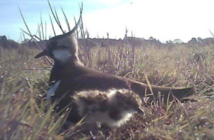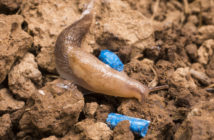Most uses of neonicotinoid pesticides represent a risk to wild bees and honeybees, according to assessments published today by EFSA. The Authority has updated its risk assessments of three neonicotinoids – clothianidin, imidacloprid and thiamethoxam – that are currently subject to restrictions in the EU because of the threat they pose to bees.
These new conclusions update those published in 2013, after which the European Commission imposed controls on use of the substances.
For the new assessments, which this time cover wild bees – bumblebees and solitary bees – as well as honeybees, EFSA’s Pesticides Unit carried out an extensive data collection exercise, including a systematic literature review, to gather all the scientific evidence published since the previous evaluations.
The team also applied the guidance document developed by EFSA specifically for the risk assessment of pesticides and bees.
Jose Tarazona, head of EFSA’s Pesticides Unit, said: “The availability of such a substantial amount of data as well as the guidance has enabled us to produce very detailed conclusions.
“There is variability in the conclusions, due to factors such as the bee species, the intended use of the pesticide and the route of exposure. Some low risks have been identified, but overall the risk to the three types of bees we have assessed is confirmed.”
EFSA finalised its conclusions following two separate consultations with pesticide experts in the EU Member States. The experts have supported the conclusions.
As with the previous assessments, exposure of bees to the substances was assessed via three routes: residues in bee pollen and nectar; dust drift during the sowing/application of the treated seeds; and water consumption.
A spokesperson for Bayer said: “Bayer fundamentally disagrees with EFSA’s updated risk assessment conclusions for the active substances imidacloprid and clothianidin. EFSA’s findings place it outside the current mainstream science on bee health, as represented by recent similar assessments done by agencies such as the U.S. EPA and Canadian PMRA. These assessments have shown conclusively that neonicotinoid products can be used by farmers to protect their valuable crops without harming honey bee colonies.
“Unfortunately, EFSA chose to base its assessment on an unworkable guidance document that makes it impossible to field a study that would not find risk, despite repeated requests by Member States for a review of this guidance. EFSA’s conclusions can therefore not be used as a measuring stick to justify further neonicotinoid restrictions. While challenges to bee health remain due to a number of factors, the fact remains that the total number of beehives in the EU is continuing to rise. Bayer will continue to work with farmers, beekeepers and regulators on solutions that will have a positive impact on bee health.”
Next steps
EFSA’s conclusions will be shared with risk managers from the European Commission and Member States, who will consider potential amendments to the current restrictions on the use of these pesticides.
- Peer review of the pesticide risk assessment for bees for the active substance clothianidin considering the uses as seed treatments and granules
- Peer review of the pesticide risk assessment for bees for the active substance imidacloprid considering the uses as seed treatments and granules
- Peer review of the pesticide risk assessment for bees for the active substance thiamethoxam considering the uses as seed treatments and granules
- Evaluation of the data on clothianidin, imidacloprid and thiamethoxam for the updated risk assessment to bees for seed treatments and granules in the EU




